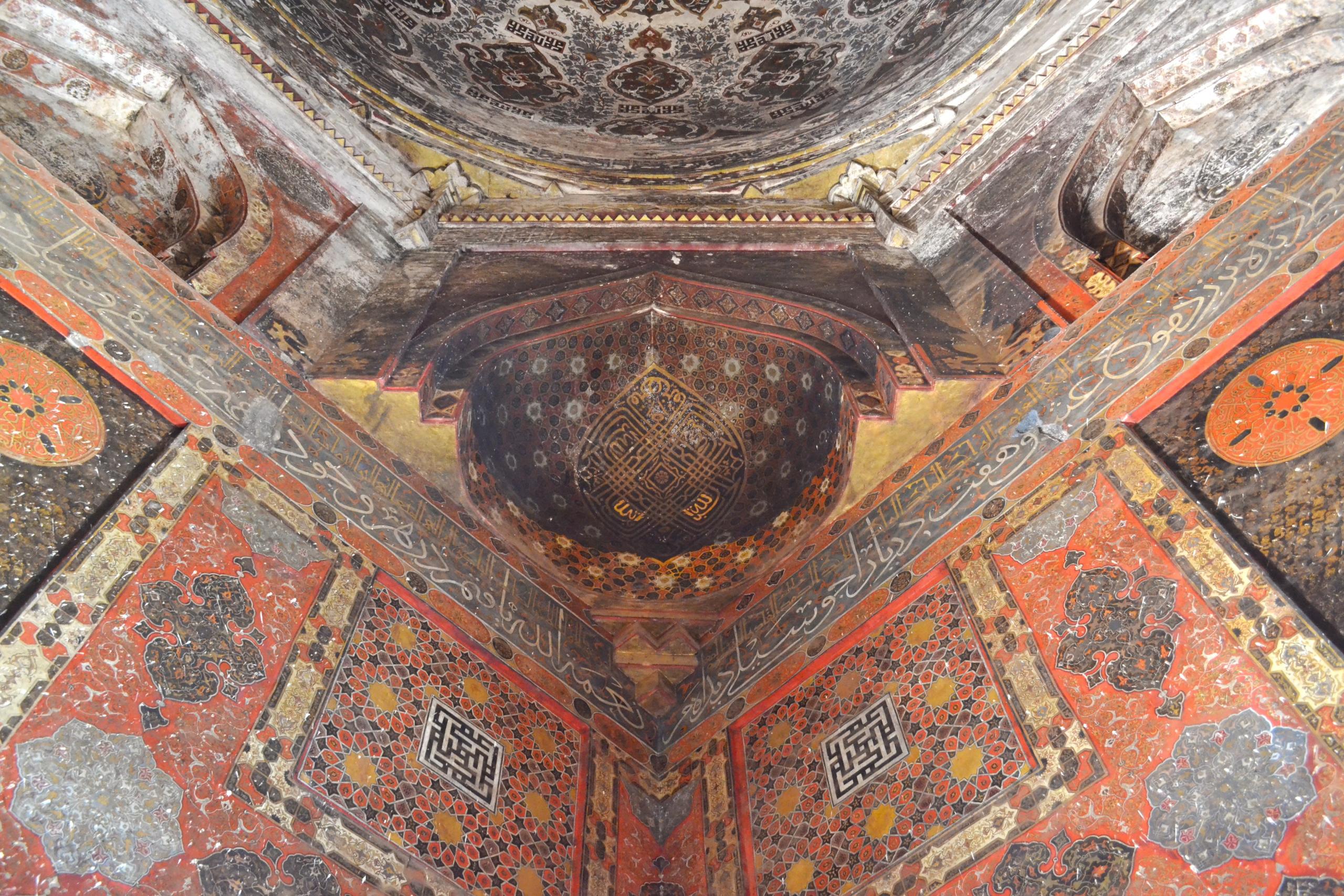Distance and Metaphor: Reimagining the Ka‘ba in Deccan India

A presentation about the replication and circulation of the Ka'ba between the Islamic centre and peripheries.
Interior of the tomb of Ahmad Shah Bahmanid (r. 1422-1436), outside Bidar, India. Photograph by Peyvand Firouzeh.
Scholarship on depictions and replications of the Ka‘ba, the most significant site of pilgrimage for Muslims, has considered the ways in which knowledge of this sacred site circulated through textual and visual representations. Less work has been done on spatial replications of the Ka‘ba, a central but nonetheless contentious category in Islamic devotion. This paper focuses on one such example: a fifteenth-century royal tomb in central India that brings together a unique conjunction of epigraphic, spatial, and painterly media to reimagine the experience of visiting the Ka‘ba. Through this case study, I revisit questions around the relationship between pre-modern architectural copies and mimesis. In addition to established mimetic and non-mimetic strategies of replication, I argue that textiles, indirect painted representations, and bodily movements in space all play a role in the making of architectural copies. I also ask what role visual difference plays in this discussion and how it has been treated historiographically, especially in geographical areas that have traditionally been deemed “peripheral” – in this case, peripheral within the Islamic world.
People

Peyvand Firouzeh
Dr Peyvand Firouzeh is Lecturer in Islamic Art at the University of Sydney, and a DECRA ARC Fellow (2023-2026). She is a trained architect and art historian specializing in medieval and early modern art and architecture from the Islamic world, with research interests in arts of Sufism, the interaction of image, space, and text, the mobility of artistic and intellectual networks within and beyond Persianate societies, and material histories of the Indian Ocean world.
